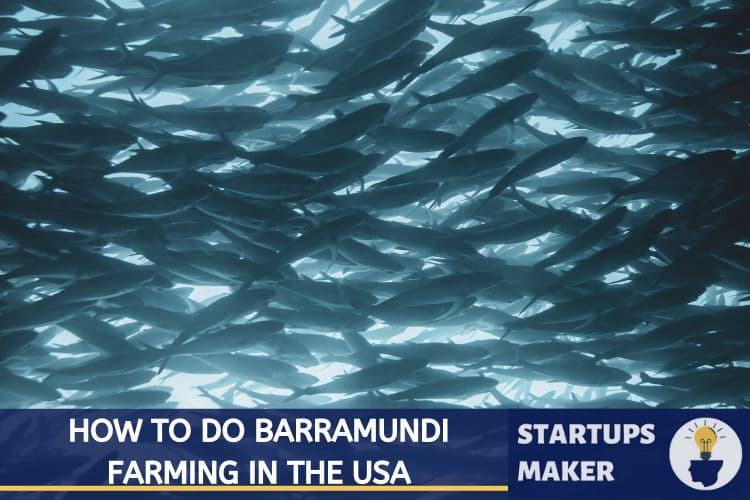The demand for barramundi has increased rapidly in the United States in recent years, particularly as a substitute for white fish. Due to its quick development and resistance to hardship, it may be successfully used in aquaculture. When raising fish in conditions other than their natural habitat, recirculating systems are often employed. If thinking of barramundi fingerlings USA, continue reading.
Barramundi Farming in USA: An Introduction
Barramundi framing in USA is quite popular these days. In other parts of the world, the barramundi is known as the seabass. Commercial fish farming is growing quickly as a result of the high demand and price of farmed fish. Do you want to know more about barramundi farming in USA and its fundamentals? Check out our blog.
Barramundi is a new arrival to the U.S. market; it is a fish native to the tropical waters off northern Australia. People enjoy fry barramundi and therefore barramundi fry for sale is a nice idea.
The local supermarket won’t stock it because of this. Fish may be bought either fresh or frozen, both as whole fish and as fillets. Due to its high sugar content, barramundi fish has very flavorful meat.
When cooked, it may replace other white fish like sea bass. Two to four pounds is the normal weight range for market wares. Typically, you may obtain them at any time of the year.
Barramundi fingerlings USA serves a large population. Grown in the United States, it is often cultivated in large tanks, individual pools, or recirculating systems. Because of this, disease spread to wild populations and water contamination are seldom difficulties with barramundi farms. In the United States, the state of Massachusetts is home to a famous barramundi farm.
Also Read: How To Start Hypnotic Dust Farming? {Detailed Guide}
Why Barramundi framing in USA is a good idea?
- Due to their rapid growth and resilience, barramundi fish in USA are considered excellent crop options. They reproduce in saltwater but may be raised in a wide range of aquatic conditions.
- Also, they may be stacked more closely together for greater storage density for barramundi fry for sale.
- They are carnivores, eating smaller fish and some shellfish, but they also eat a high-protein grain diet. However, a commercially viable barramundi of around a pound in weight may usually be produced in about six months.
- Barramundi fingerlings USA are more eco-friendly than salmon to-farm the salmon relies heavily on fishmeal as a food source since they are raised in the United States in closed systems and they eat a diet that contains few fish products.
- Barramundi framing in USA is reared without any artificial hormones or antibiotics. Meaning naturally, not helped along by anything like hormones or antibiotics.
Barramundi Recipes
Barramundi has a moderate amount of fat, making it suitable for grilling, roasting, broiling, sautéing, baking, steaming, and frying. Barracuda is typically offered whole or as fillets, with or without the skin, while bigger fish are sometimes marketed as steaks.
- The skin of a barramundi is thin and crisps up well when pan fried, making this a popular method of preparation.
- To start, use a paper towel to dry the fillets; this will facilitate the development of a crisp exterior.
- Use a sharp knife to make a series of small incisions in the skin, stopping short of the muscle.
- The skin will not shrink and pull the fillet out of shape while cooking if you score it beforehand, and the spices will penetrate more effectively.
- Use kosher salt and freshly ground black pepper to season both sides.
- Once the oil in a nonstick pan is heated over medium heat, lay the fillet in the pan skin side down.
- Flip carefully and continue cooking for another minute or two until the skin is golden brown.
- Turn off the heat and let the fillets sit for a minute before serving.
Since it has a moderate amount of fat, it is easy to cook on the grill without drying out and is quite tolerant at high temperatures.
Also Read: How To Start A Survey Company? 8 Tips
Does Anyone Know How Barramundi Tastes?
The taste of barramundi is smooth, buttery, creamy, and somewhat sweet. The meat is white and rather firm. Flavor-wise and texturally, it’s in the same ballpark as sea bass, snapper, and sole.
Raising Barramundi in a Tank
Recirculating systems are often used in barramundi fingerlings USA. They create insulated, airtight buildings to better control temperature and other environmental conditions. The buildings house the plant nurseries.
The aerators and biological/mechanical filters in the tanks keep the water clean and fresh for barramundi framing in USA. Recirculating aquaculture facilities depend critically on reliable sources of both electricity and water.
With a recirculating system in place, fish farms can keep producing fish year-round. To do this, the fish are moved to different tanks on a monthly basis until they are harvested, a technique known as “rotational stocking and harvesting.” When stocking, it is often necessary to sort the fish by size to prevent the bigger fish from eating the smaller ones.
